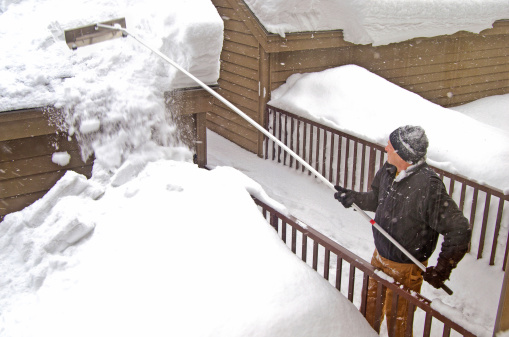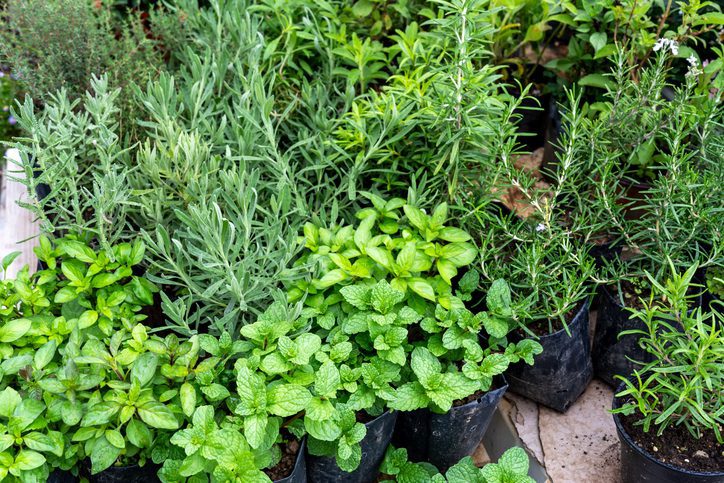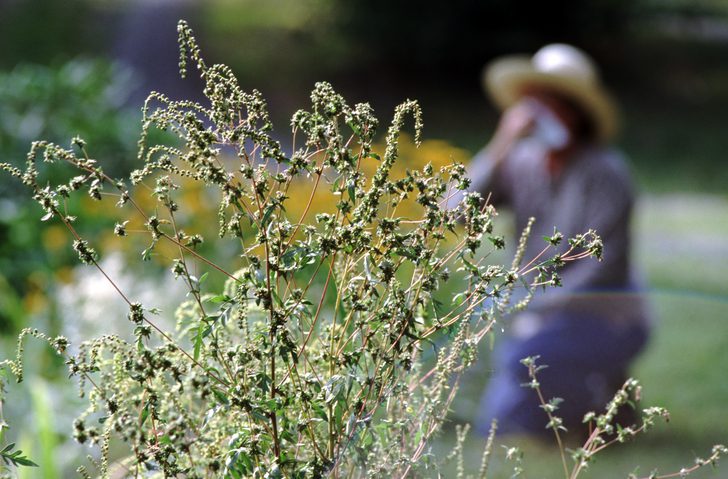Spring preparations for your home and car involve more than putting in screen doors and changing out snow tires. In addition to these tasks, you’ll also need to:
- Inspect the structure of your home for winter damage
- Get your yard ready to become a flourishing display
- Ensure that your vehicle is acclimated to run safely in warmer weather
- Check your car and homeowners insurance coverage
To get your home and automobile ready for the sunshine and warmth of spring, check out these other essential tasks.
Spring Preparations for Your Home
Your house can take a beating in the winter months. Ice dams, hail and heavy snow can cause damage to your roof, chimney and attic. To assess any damage that the cold winter left behind, start by inspecting your roof. Luckily, you don’t need to climb onto a ladder to do so.

You can use a a pair of binoculars to look for:
- Areas that have missing shingles.
- Shingles that are elevated and could allow water to seep in.
- Sagging in the roof.
- Shingles with no granules.
Check your gutters and downspouts to make sure that they’re still securely fastened after the long winter.
Examine your chimney for:
- Cracks or missing joints between the stones or bricks.
- Vegetation growing out of the stones or bricks.
- White calcium-like build up, which indicates the masonry joints are absorbing water.
Inspecting Your Attic in the Spring
If there any leaks in the roof, the attic may be taking in water and developing mold. This mold cannot only cause health problems, but it can seriously degrade the integrity of support structures. Check for any gray or black spots on the wood. These spots will often look like stains, as opposed to the fuzzy build-up you might expect for mold.
You should also check your attic for signs of wildlife. Animals will take shelter in any warm place that keeps them out of the elements. Be on the lookout for droppings, claw marks, and any signs of burrowing in the insulation.
In addition to animals, insects may also be making a home in your attic.
These signs may indicate that you have an insect infestation:
Soft, brittle support structures
If the wooden support structures feel spongy, or you are able to press a screwdriver into the wood, then it is likely that you have termites.
Wood shavings
Carpenter ants will often leave wood shavings behind after they burrow through damp or rotten wood.
Bees in or outside the attic
If you notice bees swarming around the outside of your attic, chances are you have a bee infestation. And if they’re carpenter bees, some species, which either live in small social groups or by themselves, will bore holes into wooden surfaces.
Wood powder and pinhead-sized holes
Powderpost beetles often lay their eggs in softer woods that are commonly used for structural pieces and wall studs.
Decor Enhancement Ideas for Spring

Prepping your home for spring isn’t limited to checking for damage and destruction, though. The warm weather, increased sunlight and beautiful colors of nature are what make spring such a great time of year. With a few tricks you can enhance your home to fully welcome the season.
You can brighten up any room and make it more fitting for spring by swapping out pillows of heavy, dark fabric with covers of linen or printed cotton. Brighter, more vibrant colors can evoke a sense of growth and renewal, but you don’t have to stop at just pillows.
Vases, flowers bouquets and intricate bottles can also help bring light and color to any room. You can top off your springtime interior décor by selecting citrus fragrances for the rooms of your home. Scent infusers, plug-ins and potpourri can all help usher in a feeling of freshness.
Of course, it wouldn’t be spring cleaning if you didn’t rummage through closets and storage rooms to declutter and discard items. If the idea of sorting through piles of old “junk” fills you with dread, then consider holding a yard or garage sale for motivation.
Spring Preparations for Your Vehicle
If you’ve been driving your vehicle all winter, here are several maintenance tips that are strongly recommended:

Check Your Tire Pressure
Gases expand when they’re heated. This means that as the weather gets warmer, you run the risk of driving on overinflated tires. Be sure to check your tire pressure to ensure a smooth ride and to avoid tire blowout. And while on the subject of tires, it’s important to rotate them every 5,000 to 8,000 miles.
Check Your Equipment
You’ll want to clean your windshield wiper blades, as these can become incredibly dirty after an entire winter of removing ice, snow and sand from your windshield. You should also have the belts and hoses of your engine inspected. Winter weather is especially tough on them and they can develop cracks in the colder temperature.
Have Your Car Washed
Treating your car to a wash, wax and detail may seem to serve an aesthetic purpose only, but it can greatly increase the longevity of your vehicle. You’ll want to wash off any salt and chemicals that have built up on the car’s exterior over the course of the winter as they can cause corrosion.
In addition, it’s important to remove any salt or sand that has been brought into the car’s interior. Also coat any leather with a protective conditioner to prevent cracking that may occur from sun exposure.
Preparing Your Toys for Spring
If you own a vehicle that is only driven during the warmer months, such as a classic car or motorcycle, then you’ll want to follow some additional inspection and maintenance tips before taking your summer vehicle on the road:
- Drain and replace fluids: This includes gasoline that doesn’t have fuel stabilizer. This is especially important for brake fluid as it can easily absorb moisture over the winter.
- Test the engine battery: Make sure that it has enough juice. You may want to use a “smart” battery charger, which will automatically turn itself off before overcharging and damaging the battery.
- Check tires for flat spotting: Bring the tire pressure up to specifications. If there are signs of flat spotting, or cracking, it may be worth it to buy all new tires.
Spring Preparations for Your Lawn and Lawn Equipment
Lawn equipment such as ride-on and push mowers, leaf blowers and weed whackers all require springtime maintenance. Draining and replacing any fluids, as well as charging the battery is a good place to begin when trying to start lawn equipment that has been sitting in a shed all winter.

Once your landscaping tools are in proper working order, it’s time to go after the lawn and garden. This checklist will help you get your property in tip-top shape – or set the stage for a much larger and ambitious landscaping project.
- Take a rake to it: The first step you should take is to rake up any leaves and loose sticks that are on your property. Raking will also help you to break up the soil to get it ready to receive the nutrients it needs to grow. And don’t forget to get into the garden and rip up any weeds or dead plants that aren’t perennials.
- Fill the gaps: Now is the time to fill in missing patches of grass by laying down seed or sod. You should also lay down a couple inches of mulch in your gardens or around any plants to help them maintain moisture and temperature.
- Aerate it out: Aerating your lawn will help it draw in more moisture, nutrients and oxygen. If you have a riding lawn mower, adding an aerating attachment is the best way to go.
- Take a little off the top: Once your grass is growing, you should cut it to a height of 2 1/2 to 3 1/2 inches. You should also cut it frequently, so that you never have to remove more than one third of the grass. Doing so will ensure a thicker, greener lawn that can survive the summer heat.
Conclusion
With spring’s vibrant colors, warm sunlight and cool, gentle breezes, it’s no wonder why it’s the favorite season of so many people. With a little preparation, decoration and care you can make the most of the season.







Great information to share. We are so busy these days we sometimes forget the little things that could save of from big things happening. Thanks for sharing
Great and refreshing information.
Thanks have learned alot
Keep my senior mind thinking
Thank you for providing information on these different topics.
I enjoyed reading I learned things I didn’t know
I enjoyed reading the mental refresher.
Good Informative advise. Thank you
Thank you for all your comments and for being my Hartford
Are very good information and I appreciate you all sending it for my own care for my home and car Thanks again.
Thank you for the great information, especially about my home. I already have some of the items on my list.
Thank you for sharing this informational message with me. I find it to be very helpful.
Great information. I am in the process of removing dead shrubs (yes, we had the horrible freeze here in Feb). I was lucky to have no other damage (like broken pipes) but am going to have some pipes in the attic wrapped again and have extra insulation added. Good info about the wildlife as the squirrels like to chew into attics here to find a safe place. Thanks!!
Thanks so much! Very helpful for my car!! Also great tips for Spring housecleaning !! Lee
Great information. Thanks for sharing. I’m making this my reference list.
Thank you for this valuable information. My car has been washed, vacuumed, floor mats cleaned, tires rotated, new brakes on rear and thoroughly inspected, and all belts checked. All left to do is clean the leather upholstery. Keep the good advice coming.
THANKS , THIS WAS VERY HELPFUL TO ME ,A SINGLE WOMAN ,NOW IM MORE NOLEGABLE IN CARS , MY YARD KEEP IT COMING . THANKS AGAIN
Thank you for sharing that information. Have a terrific spring!😀